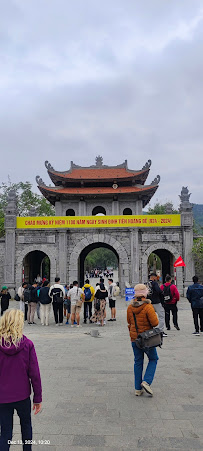Frequently Asked Questions (FAQs)
Vietnam is located in Southeast Asia on the eastern edge of the Indochinese Peninsula. To the north, it shares a boundary with China; to the west, with Laos and Cambodia; and the South China Sea lies to the east. Geographically, Vietnam lies between 8° and 24° North latitude and 102°-110° East longitude, placing it in a tropical zone, best known for its variety in landscapes, rich cultural dynamics, and strategic location in Asia.
Vietnam shares a border with three neighbouring countries of Southeast Asia. It shares its borders with China to the north, Laos to the west, and Cambodia farther to the south. These neighbouring countries aid in cultural-historical associations along the region. Eastwards, Vietnam has a coastline along the South China Sea, which for long has influenced maritime trading and coastal culture. Such borders render Vietnam an integral part of the Indochinese Peninsula.
In the southeastern part of Asia, the geographic region called Southeast Asia contains Vietnam. It lies on the eastern side or, almost, the southeastern side of the Indochinese Peninsula and is flanked by China, Laos, and Cambodia, with a long coastline bordering the South China Sea. This strategic location places Vietnam at the heart of Asia, where major cultural, economic, and trade routes cross, thus becoming an alluring spot for travellers who roam the region.
Depending on the cities of departure and arrival, the approximate distance between India and Vietnam is 3,000 kilometres (1,864 miles). So, depending upon the airports we're flying to or from, direct flights here take around 4 to 6 hours from major cities like New Delhi or Mumbai, landing in one of Vietnam's main airports: either in Hanoi, Ho Chi Minh City, or Da Nang. Several airlines fly between India and Vietnam, either with direct flights or with connecting ones; hence, Vietnam truly stands within easy reach of an affluent traveller seeking culture, nature, and adventure.
The South China Sea lies east and south of Vietnam and is considered part of the larger Pacific Ocean. With its huge oceanic frontage of some 3,000 km, the country boasts some lovely beaches, classic fishing villages, and lively port cities. The sea has paramount influence on the climate of Vietnam and equally so upon its economy and tourism. It provides boating, diving, and beachside relaxation opportunities across scenic spots along the coastline.
Vietnam is considered fairly close to India, especially in comparison to destinations from other parts of Asia or Europe. The two countries are about 3,000-and-some kilometres apart, and the direct flights from New Delhi, Mumbai, or Kolkata to either Hanoi or Ho Chi Minh City usually take anywhere between 4 and 6 hours. And as one can find multiple options of flights with great regional linkages, Vietnam has grown to become an easily accessible and widely admired destination for Indian travellers.
From November to April is the prime time to visit Vietnam, when the weather is generally dry and pleasant across most regions, with comfortable temperatures particularly ideal for visiting cities, beaches, and cultural sites. However, given the country's varied geography, climate conditions differ from region to region; with the north being cool in winter and the south warm and sunny, Vietnam is indeed a year-round base with well-equipped options for every traveller.


